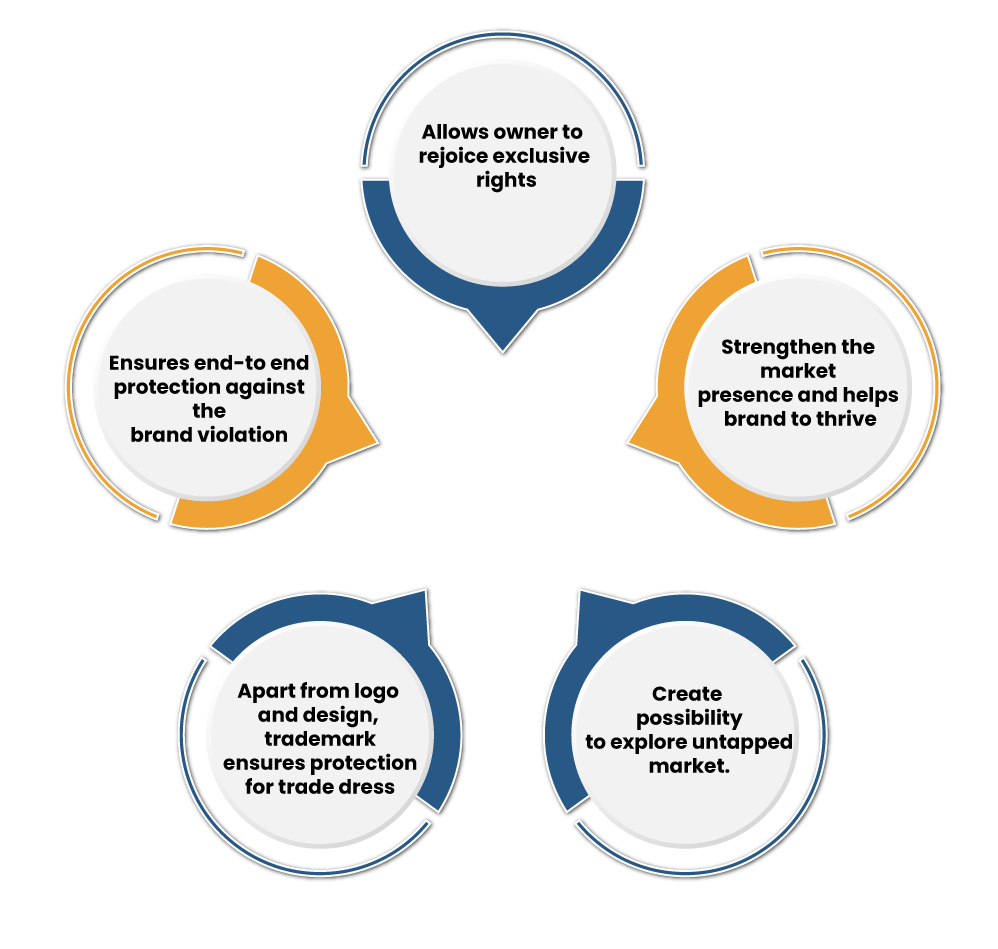The ever-changing fashion industry landscape has compelled the business owner to opt more aggressive IPR strategy. The intangible assets like design, logo, and other pictorial elements play a vital role in the growth of the fashion house. This article aims to underline the key aspects related to the significance of Trademark registration in Fashion Industry.
Key takeaway
- Fashion design refers to a form of art confined to the creation of garments & other lifestyle accessories.
- Apart from knowing the prevailing marketing trends, all fashion designers should dig down the concerned IPR law to ensure uncompromised protection for their intangible assets.
- IP is the result of applying your intellect to create something original or unique. The fashion industry is an IP influenced sector that continually generates creative ideas and innovation.
- In the fashion industry, creativity is not only confined to the designing act, but also entails the marketing of the product.
- All of this intellectual capital is quite valuable for the fashion house. But, still, there are many businesses in the fashion domain that prefer to go without relevant IP protection.
- The fashion industry is a high-value sector both in terms of money and market presence. Innovation and aspiration are the two key attributes that help this sector to grow at a rapid pace. This is the reason why this sector is more prone to IP violations.
- Business officials need to pinpoint aforesaid valuable intangible assets promptly, determine their business applicability, & agree on those to be secured & leverage via the IP system.
Read our article:Overall Trademark Registration in India
What is trademark Protection?
According to the Trademark Act, 1999, a trademark refers to a logo, design or symbol that act as a source identifier for a particular product and service.
It helps a company or brand to instil a distinctive image in the target market. The trademark protection renders the exclusive ownership right to its owner that let them sue the defaulters in the case of brand violation. Trademark is categorized into 45 distinct classes in the view of NICE classification for a trademark. Trademark Class 25 deals with apparel, footwear, and headgear, but it does not include specific clothing & footwear manufactured for special use. The ever-increasing utilization of Trademark has strengthened the role of Trademark registration in the Fashion Industry.
Trademark Registration in Fashion Industry
Trademark protection plays a vital role in the overall growth of the fashion sector. The fashion entities mainly rely on their brand value to make a profit out of their business activities. A registered trademark prevents the infringer from copying the fashion brand for the sake of business profit. Trademark registration acts as a saviour for fashion start-ups and small businesses that have low risk appetite against the loss triggered by the brand infringement.
For fashion industries, Trademark plays an anchor role in protecting the brand value and boosting marketing efforts.
The names & logos can be protected under trademark based on the products (footwear, clothing, fabrics, accessories, etc.). The slogans of marketing campaigns for each offering can be secured via trademark protection.
Trademarks that do not fall under the general category but include trademarks based on moving images, visible signs, including hologram or non-visible signs (fragrance and sound) deemed as Non-traditional marks can also be trademarked.
Thus, deodorant, perfumes and other related items can also gain IP protection.
The extent of Trademark in the Fashion regime
Section 2(zb) of the Trademark Act, 1999, specifies that the Trademark can create visual coordination with the target customers. Furthermore, it serves as a source identifier for certain goods and services of one company from the rest.
This can also entail the different shapes, colour schemes, & even their packaging. Additionally, the trademark law also ensures comprehensive protection to the trade dress, which includes packing the product under its regime. But, the court of law in the various scenarios has dragged the attention of the masses towards the fact that the product packaging forms a vital aspect of design in fashion apparel.
The same has been briefed in the subsequent section with some examples. The importance was also given to the fact that trade dress also encompasses shape, colour schemes, graphics, size, texture.
Examples that Proves that Trademarking goes Beyond Brand and Logo in the Fashion Regime
Surprisingly a fashion designer often integrates a trademark to the extent that it becomes an integral element of the brand value.
Fashion designers often manifest a trademark outside the clothing products or accessories. For instance, a Louis Vuitton handbag displays the popular logo LV in a repetitive manner which acts as an integral part of the fashion for the bag.
Consequently, the logo becomes an inherent part of the design over time, and therefore, Trademark can ensure end-to-end protection against design imitation.
In general, the trademarks are either affixed inside the clothing line or manifested on other areas like buttons or ribbons. Therefore, the majority of the designed apparel fails to avail trademark protection under the influence of the non-manifestation of the mark.
Fashion designers can rejoice exclusive rights over the unique attributes of the product via trademark registration besides the brand names and logo. For instance, the Australian fashion designer Bettina Liano has availed a trademark registration for the distinctive pocket stitching on the garments. Likewise, the well-known fashion house Burberry avails the trademark protection over the expression Burberry & the unique check-based design. Burberry has legalized its distinctive mark in many nations, including the USA[1].
Being a potential source identifier, the Trademark also encompasses the trade dress, broadly known as product packaging. But on various events, the court has specified that the trade dress should also be considered an imperative part of product’s design. Some courts have clarified that the trade dress also entails the overall image of the product such as shape, size, colour, graphics, textures, and even sales methods and hence it is protectable under trademark law.
How does Trademark add value to a fashion house?


Whether you are a start-up or a large business house, your brand is the most imperative part of your business. End users will try to coordinate your brand with specific quality, styles and experiences. Most fashion entities invest a great amount of time and capital in setting up a strong bonding with their target users via their brand.
But, if the brand is not safeguarded via trademark filing & enforcement, end-users may come across the same quality, style, & even experiences elsewhere, which can adversely impact your marketing efforts.
For this reason, it is vital to avail trademark registration without any delay. This minimizes the risk of others stealing or borrowing from your brand. It also facilitates legal coverage to pursue cases where copyright violation has come into action.
The most distinct attributes that a fashion company should safeguard via Trademark are its logo & brand name as these remain in direct contact with the customers.
Fashion brands may craft logo design & textile prints, which are also distinctly linked with the brand. These can also be trademarked to deter others from using the prints or patterns on their products without your consent. In addition to that, securing the artworks of the fashion company from copy infringement could help improve the brand value and revenue.
If you seek protection for custom textile print, 3-d aspects of the new fabric composition of a unique shape, legalizing your IP can add value to your business; it allows you to choose whether you wish to deter others from using your asset or if you intend to confer its rights to anyone else for revenue generation.
Conclusion
Trademarking is a delicate process of safeguarding intangible assets like logos, names, slogans, so on and so forth. Today businesses have become more concerned about their image and reputation, and they never hesitate in pouring in extra capital to strengthen their IP strategy. Businesses from the fashion sector also pay extra attention to securing their brand image and other valuable assets since they are the prime target for the infringers. Feel free to prompt us in case you need some clarification on Trademark registration in Fashion Industry.
Read our article:How Can You Apply For Online Trademark Registration in India?











